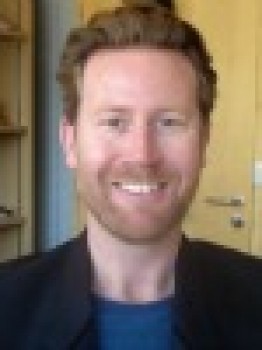Events
Dr Matteo Palma, Biomolecular Nanoarrays: from nanobiotechnology to materials science

Dr Matteo Palma
| Date: | Wednesday 11 December 2013 15:00 - 16:00 |
| Location: | Peoples Palace 1 (PP1) |
Dr Matteo Palma
The School of Biological and Chemical Sciences, Queen Mary University of London
SEMS/IoB Seminar Series
Coffee/tea/biscuits provided after the seminar
The ability to control biomolecules on surfaces with nanometer resolution is of great interest in the fields of nanoscience and nanotechnology. Biomolecular nanoarrays, in particular, are of interest in the study of DNA-protein interactions, for biodiagnostic investigations and as a tool to drive self-organization of nanomoieties on surfaces
I will discuss techniques based on the combined use of lithographic nanopatterning and bio-molecular self-assembly to control the immobilization of biomolecules in arrayed nanodamains. I will show how this allows us to produce highly ordered, self-assembled arrangements of nano-objects, ranging from proteins to DNA nanostructures, and bio-inorganic assemblies, for a variety of (nanoscale) investigations.
Using electron-beam and nanoimprint lithography we fabricated sub-10nm metal dots arranged in multiple configurations on Si and glass substrates. We have developed bio-chemical strategies for the selective bio-functionalization of these patterns, at the single nanodot level. I will show how by specific design of the biomolecular nanoarrays, it is possible to simultaneously monitor hundreds of protein/DNA binding events at the single-molecule level. We envision that the high density and excellent resolution achievable with our platform can find general application in high throughput heterogeneous assays of a wide variety of biomolecular interactions. In this context I will discuss the use of our nanopatterned biomimetic surfaces to probe the importance of transmembrane proteins (integrins) clustering and geometric arrangement of binding sites, in the formation of cell focal adhesions
I will highlight the broader utility of such nanopatterned surfaces for the self-organization (on surfaces) of bio-inorganic assemblies as well as DNA nanostructures and carbon nanotubes. In particular, I will discuss how the combination of high resolution patterning with end-functional chemistry enables the assembly of 1D functional nanostructures in an orderly fashion. The basic requirements for this approach are: molecular-scale lithographic patterning, control over nanostructure length, and facile end-functional chemistry. We believe this may be a viable avenue toward the integration of these materials in complex nanoarchitectures.

